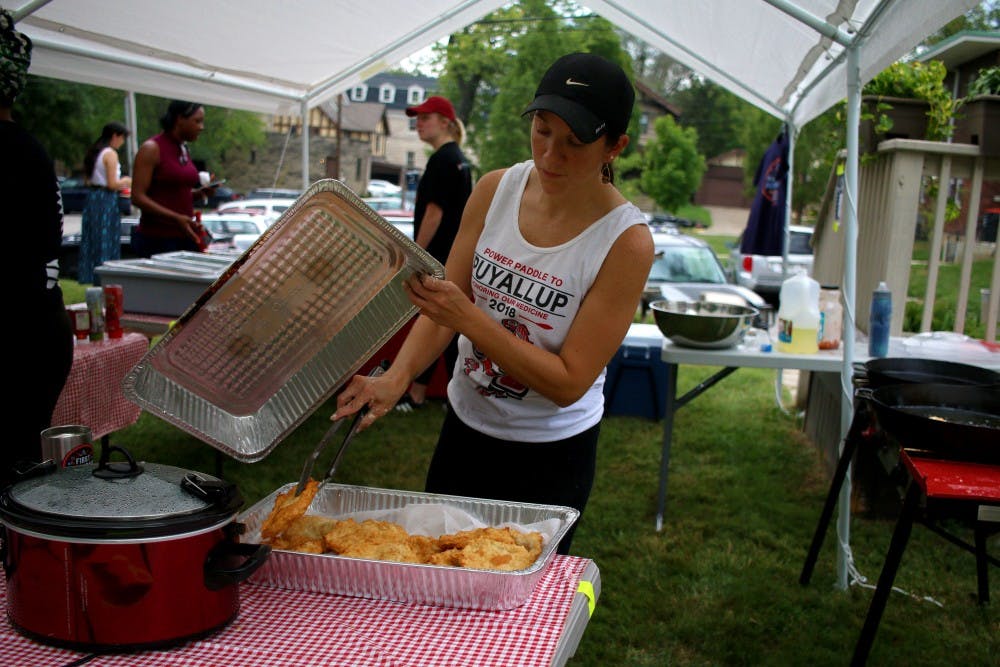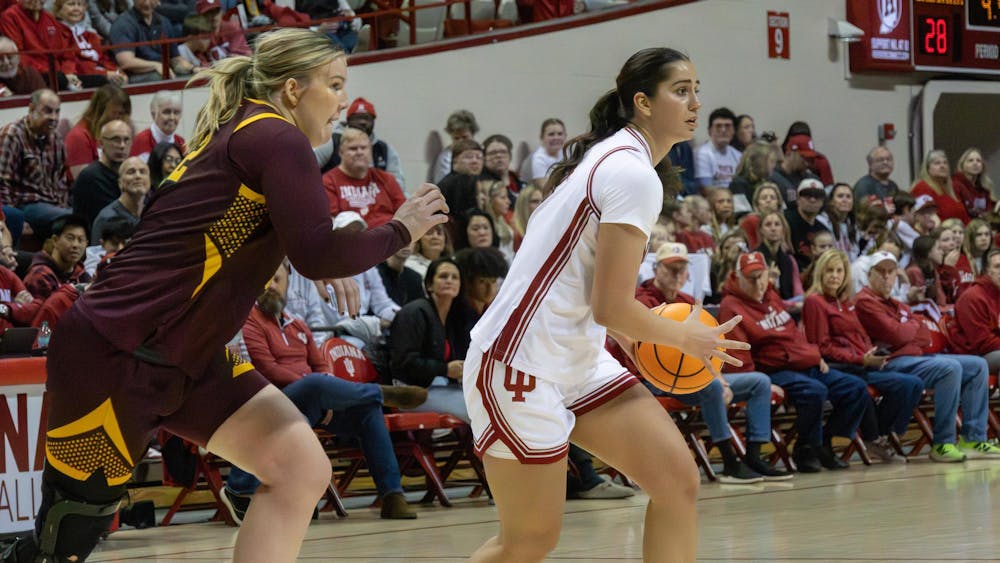Heather Williams stretched the ball of dough out with her fingers. When it was large enough to her liking, about the size of the palm of her hand, she placed it in the pan of boiling oil. It sizzled in the popping oil, hot enough to burn anyone too close.
After the dough had fried completely, Williams picked it out of the pot with tongs and placed it in an aluminum container to keep warm.
This frybread was soft and would soon become an Indian taco filled with seasoned beef and beans. A condiment table sat not far away, holding cheese, lettuce, onions and sour cream on a red-and-white checkered tablecloth.
Williams, the program assistant at First Nations Educational and Culture Center, is making Indian tacos, a Native American dish.
First Nations hosted the Indian taco sale Sept. 21 at its house on Eighth Street, serving traditional cuisine to students, faculty and the Bloomington community. While the tacos were the main dish, customers could get their frybread without any toppings or with cinnamon sugar, to make a “dessert taco.”
“This event brings people together,” Williams said.
Frybread is one of the most recognizable dishes in Native American culture, and it is often sold at fairs and festivals. While it is considered traditional Native American cuisine, it didn’t come about until after colonization.
In the 1840s, white pioneers moved into Navajo land in the west. After 20 years of failed peace, the U.S. government forced the Navajo people to leave in 1864. Their 300-mile trek is called the "Long Walk of the Navajo."
Hundreds of people starved to death on these walks, and the government only supplied the Navajo people with lard, flour, salt, sugar, baking powder and yeast. Over time, the Navajo learned to make these products into frybread, and it has become a tradition, said Jordan Begay, a senior studying biology at IU.
Frybread is a staple for many Native American tribes and different tribes often add their own favorite foods to it, Begay said.
“Indian tacos are something I grew up with so it’s really personal for me,” said Begay, who is from the Navajo tribe in the southwest United States.
He eats his frybread with green chili and mutton because they are natural resources from that area.
Briana Albini, a first year master’s student studying Environmental Science, is part of the Miwok tribe, a coastal tribe from what is currently central California. She said she prefers fried seaweed.
Native American tribes come from a range of different places and climates, and because their traditional cuisines come from the natural resources around them, these cuisines vary greatly.
Williams, for instance, is part of the Puyallup tribe, from what is currently Washington.
Because her tribe traditionally lives off the water, smoked salmon is common. They smoke it by putting the raw salmon in a box with burning cedar because there are many cedar trees in Washington.
Huckleberries are also part of the Puyallup tribe’s diet.
“I have lots of memories of picking huckleberries with my grandpa,” Williams said.
Begay said his family always eats the entirety of animals, including sheep.
He likes sheep eyeballs, which he says are tough but pop in your mouth. His grandma would eat sheep brains.
“We don’t waste anything,” he said.
Aside from meat, Begay said his tribe often eat corn, squash and beans. They grow food in “three sisters,” or in groups of three that have a symbiotic relationship. For these three, the corn is tall, which provides height for the beans to grow up. The squash grows low to the ground and forms a foundation at the bottom.
Another recipe Begay likes is corn mush, which includes mixing calcium-rich juniper ash and corn, sometimes also mixed with honey.
Back on the west coast, Alibini’s tribe eats lots of salmon and seaweed. Bay nuts are also common in central California, and Albini enjoys them roasted. The nuts contain as much caffeine as a cup of coffee.
“We sometimes put them in truffles to make caffeinated truffles,” she said.
Native Americans often eat traditional food, but sometimes they add a twist, like putting the pine nuts in truffles.
Even people who aren't Native American like Williams, Begay and Albini enjoy the food.
Four academic advisers from the College of Arts and Sciences attended the Indian taco sale. They said they are making an effort to attend diverse events, and this was their first one.
Both Stacy Weida and Serena Ostrander had eaten Indian tacos before, but this was a new experience for Shauna Melvin and Kim Ross. All four women loved the tacos.
“It’s really delicious,” Melvin said after she took a big bite.






